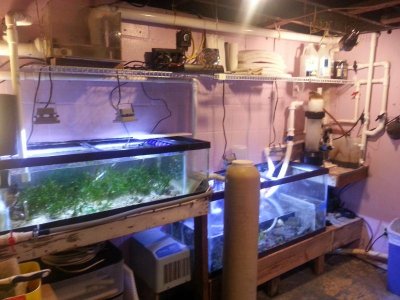Seakrait
New member
I have been using large macro fuges for several years now with good success. I have used and still use many types of macro ranging from chaeto to gracilaria to ulva to caulerpa. I am in the process of building a fish breeding system in my garage. I was wondering if with the large bioload an ats would be a better choice than a very large macro fuge. My plan was to stick with a large macro fuge then if my phosphate and nitrate are detectable add an ats. Thoughts? There will be a large skimmer as well as carbon, gfo and poly filter used as needed. No flaming please. If you dont run an ats please hold your opinion.

